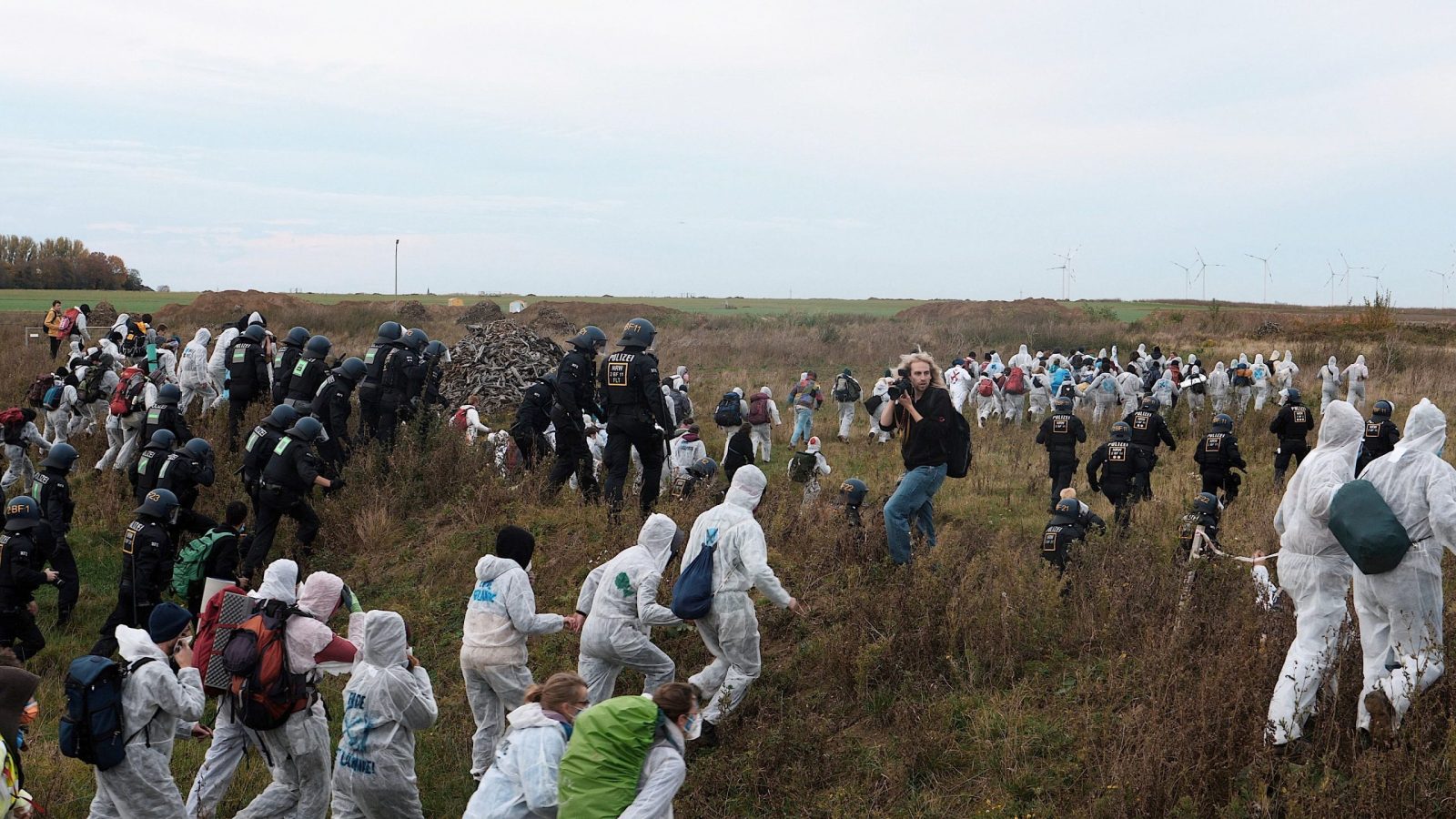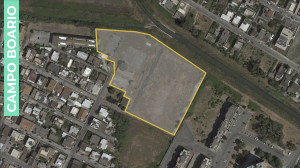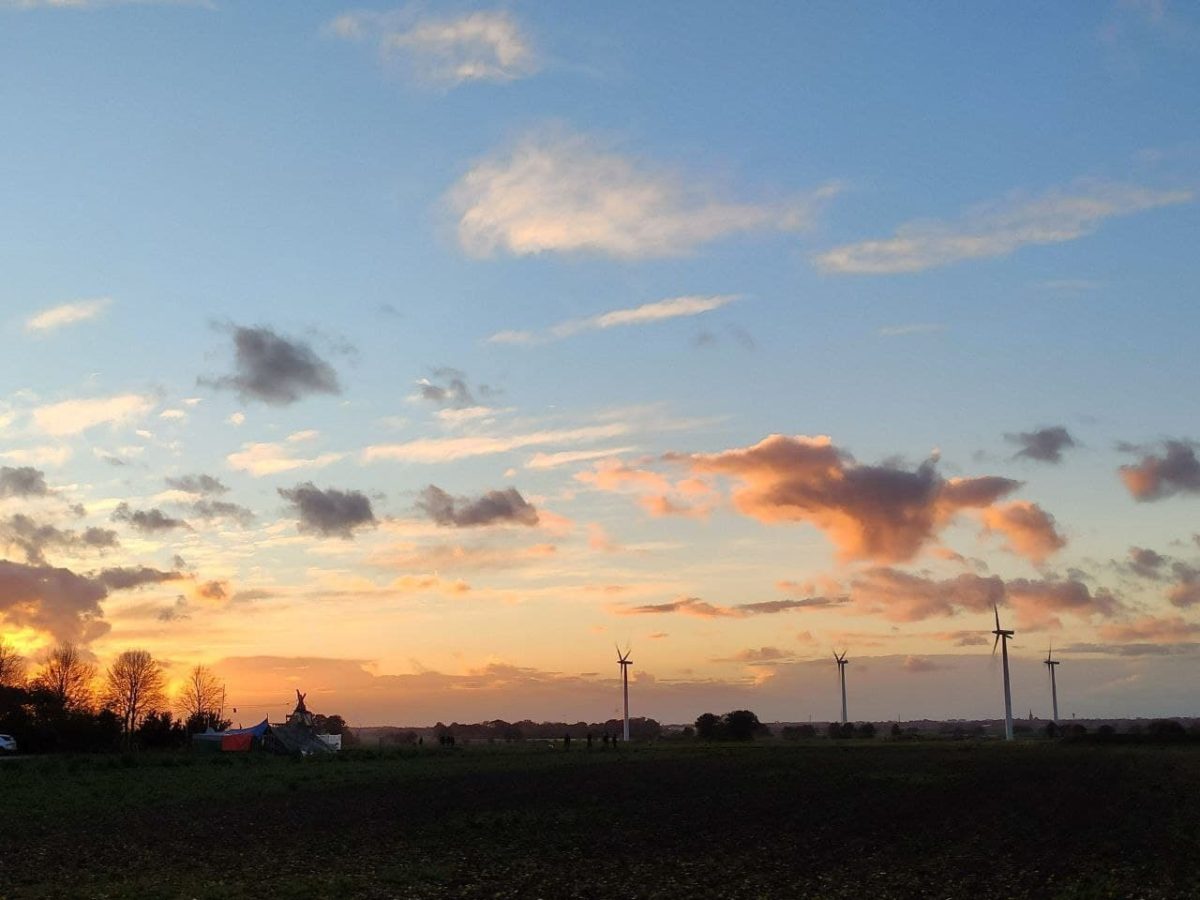
Tesserae researcher and activist Luis Miguel Benavides reports on his recent experiences at the ZAD Rheinland protest camp, a vital node of resistance in the fight against climate change.
Lützerath, or Lützi as the people living here call it, is just a tiny dot on the map of west Germany. A small village at risk of expropriation and subsequent destruction by the mining company RWE in order to expand one its three lignite mines active in the area — including the biggest one in Europe. The story of Lützi is unfortunately not a new phenomenon. To date, 50 villages in this area have already suffered partial or total destruction of their settlements to facilitate mining activities, including parts of the Hambach forest, which was illegally evicted in 2018 by the police, following the orders of the federal government of North Rhine-Westphalia. However, the movement of resistance in these villages, far from becoming smaller, is gaining experience and cohesion by the minute.
At first glance the lignite mine is impressive. It is gigantic, as are the machines working on it. It represents the physical footprint of a whole history of industrialization in one of the most economically prosperous regions of Germany, albeit at the cost of using one of the most polluting energy sources on the planet. Lignite, or brown coal, is the most CO2-intensive fuel in Germany’s energy mix. The brown coal from Lützerath is extracted by opencast mining and then burned in a nearby power plant, emitting volumes of CO2 in the process that appear to radically defy Germany’s plans to decarbonize its energy sector in the next five to fifteen years.
In Lützi, however, protestors have been diverting RWE’s plans, redirecting the old narrative of the evil corporation eating away at the helpless little community towards an unexpected turn. For some years now, the climate movement in Germany has been on the rise, spreading and weaving alliances between activists engaged in social, climate and economic justice, whilst simultaneously becoming more radicalized in its methods of protest, eschewing violence, and exploring strategic escalation through tactics of non-violent confrontation.
This exciting mix of people and practices is readily visible in the community of activists defending Lützi, continuously feeding back and reinforcing their wave of peaceful resistance.
Civic actions and mobilizations such as the Alle Dörfer Bleiben (‘All villages stay’) platform, street demonstrations and legally binding petitions are paralleled by socially driven protest tactics, such as the ZAD Rheinland (‘Zone À Défendre’ or ‘Zone to Defend’).
The ZAD Rheinland is a piece of land that activists have been granted access to by farmer Eckardt Heukamp, who is a local at risk of eviction as part of RWE’s mining extension plans. The land serves both as a camp for all the activists who want to defend Lützerath and its people, and as an autonomous, feminist, antiracist, and antifascist space. At the ZAD, the fight for climate justice is no longer abstract, it is here and now.
I am lucky to have lived in the camp for a short but intense period of time, supporting various actions.
The welcome there on my arrival is warm despite the autumn cold, and the atmosphere radiates a deep conviction among the residents that Lützi is unevictable. This indomitable staying power is the result not only of the network of physical structures built at the site to block RWE’s destructive machinery from bulldozing the local landscape, but also the interpersonal structures that have been built at the ZAD, an inspiring blend of social and architectural foundations pointing the way toward a kind of society worth aspiring to. In just a few months, this camp has gone from being a few tents and a couple of tree houses, to becoming a large collective organism that breaths and responds both to its environment and the needs of its common goals.
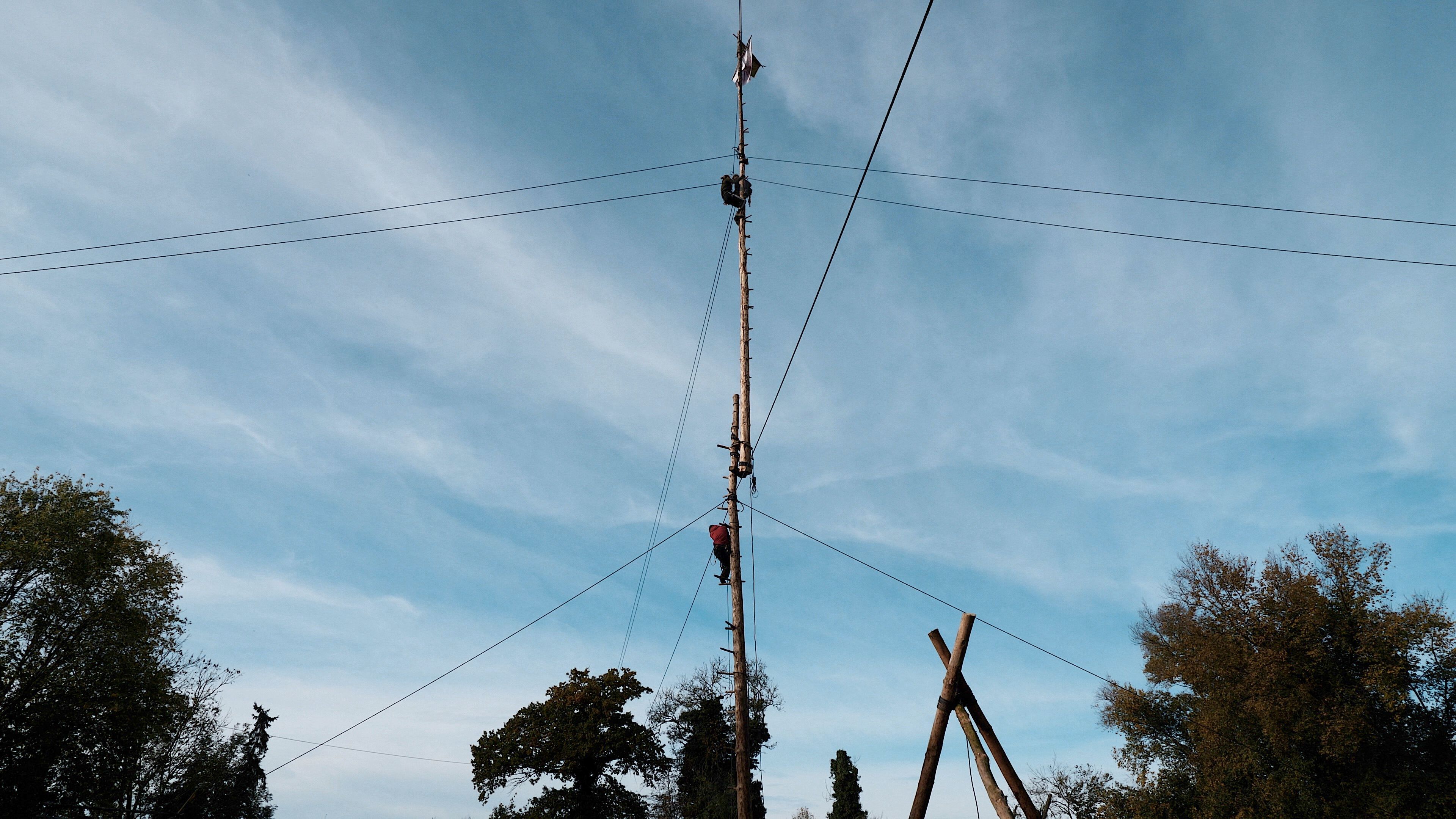
Photo by John Mio Mehnert.
The camp is organized to provide the best possible conditions for living and working together.
Assemblies offer an effective form of group self-direction: decisions are made and responsibilities are assumed with regard to the things that need to be done and their relative priority.
All camp tasks are shared communally, with a special emphasis on cis-gendered men being invited to take on tasks traditionally considered as housekeeping, such as cleaning up the ‘Kaka-pipi-talism’ (which is what the camp toilets are called), with much gratitude for their efforts.
The ZAD has been designated as an area where drugs, including alcohol and tobacco, are not to be consumed, with the aim of highlighting and promoting critical and reflective consumption rather than outright prohibition.
Different generations of activists share spaces, and inspire each other, and workshops are offered at the camp on topics as diverse as building structures, climbing and learning to collectively reflect on the positionality of our activism, biased as it is sometimes by the relative homogeneity of our social beliefs and backgrounds.
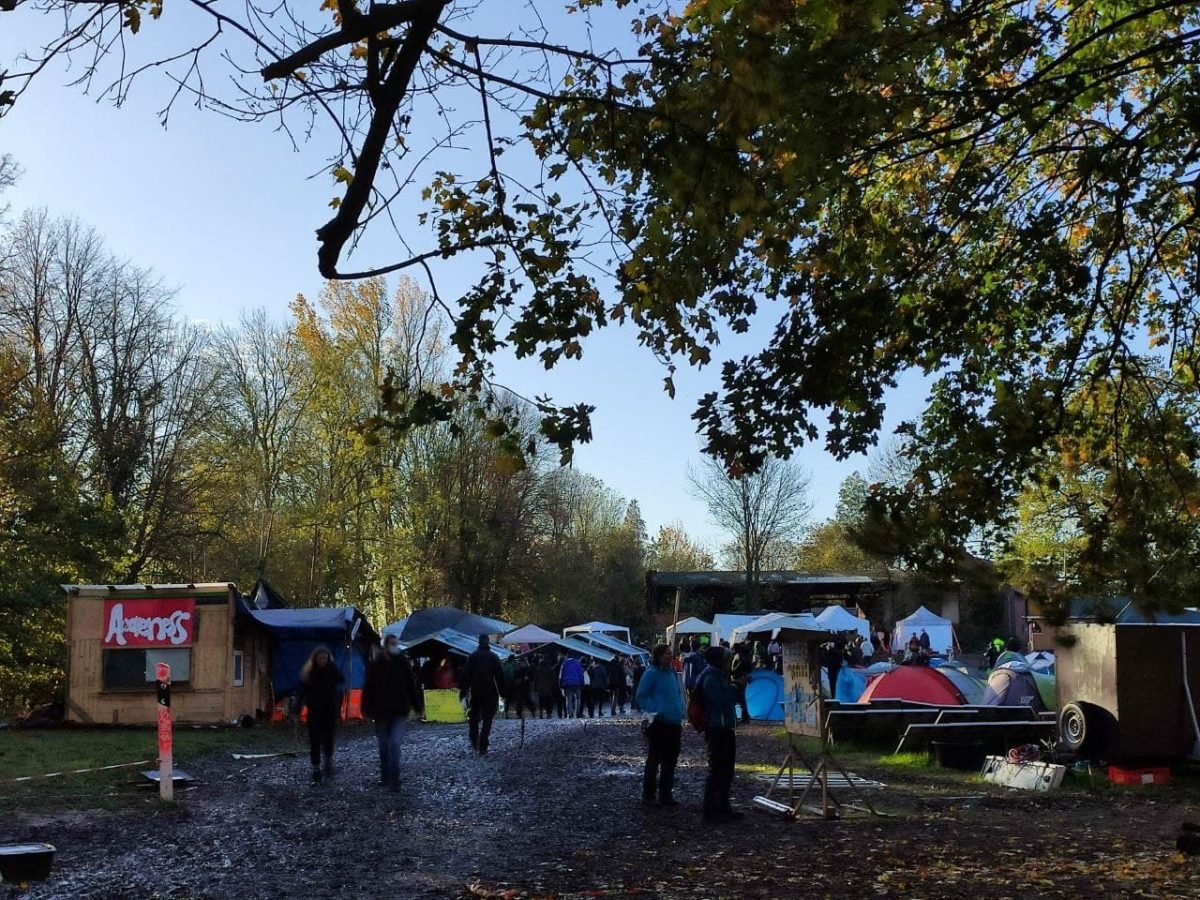
On Sunday there is a massive demonstration that ends with the temporary occupation of one of the lignite mines.
There are clashes with the police, but we manage to stop the activity of the mine for a few hours. It is not much, and perhaps it is only symbolic, but RWE losses time and money, and we gain hope and confidence. For the moment, the situation remains in an unstable equilibrium until the next step in the legal battle is cleared up. The court must decide whether the expropriation of Eckardt’s land is in the interest of the common good or not. They have until January 7th to make a decision, and in the meantime we will continue to prepare, eat and celebrate, even if it is November and we are soaking wet and cold as hell.
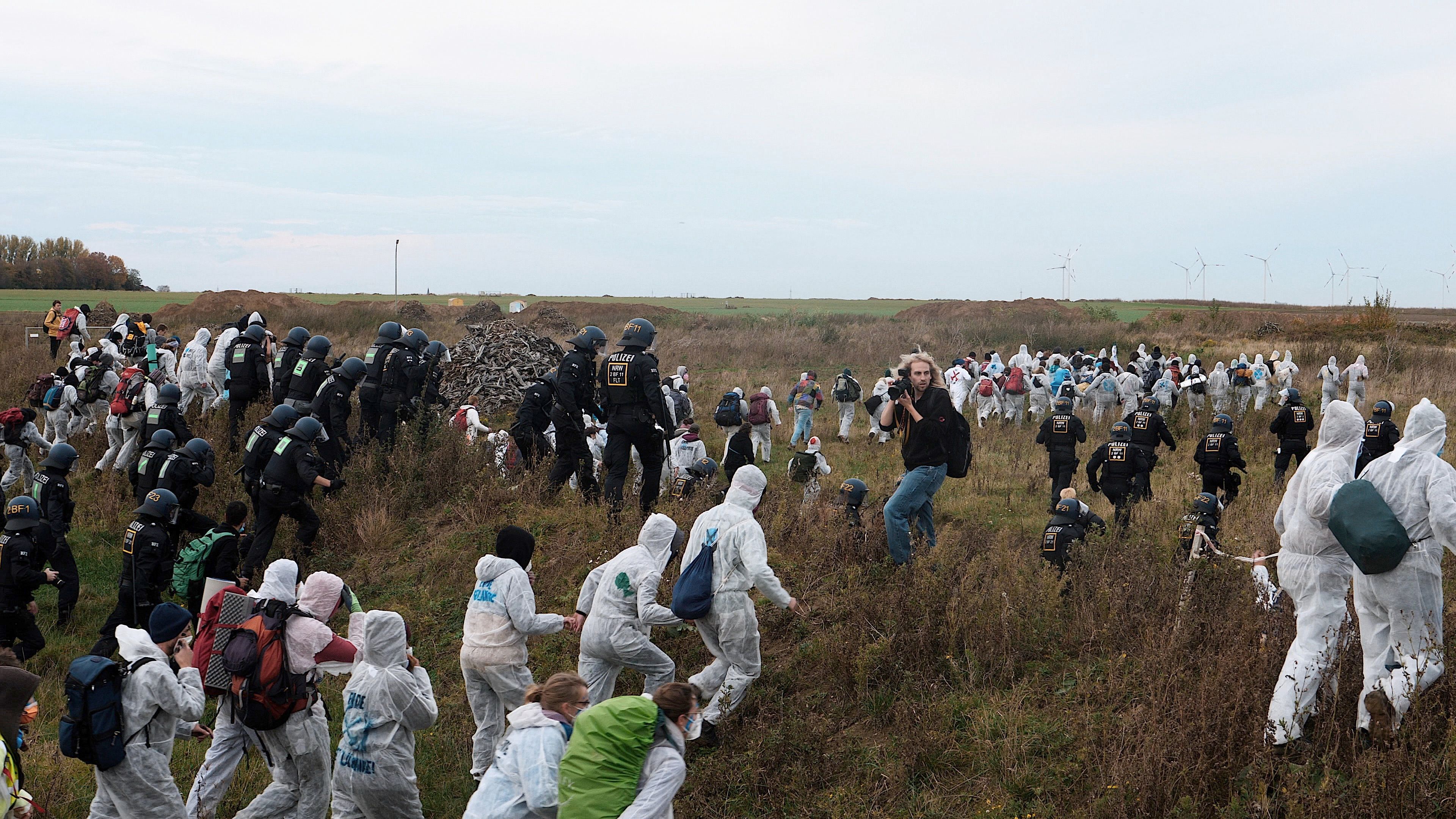
Photo by John Mio Mehnert.
In the main tent there is a piano that someone plays every now and then. Its delicate sound makes your mind wander and inspires both warmth and conversation in an organic way. Moments of connection like these at the camp embolden you to be unafraid of making mistakes, because here people are moved by solidarity, not by fear. Together we share a deep belief that any piece of land can be our home, our space to dream and influence what is yet to come.
